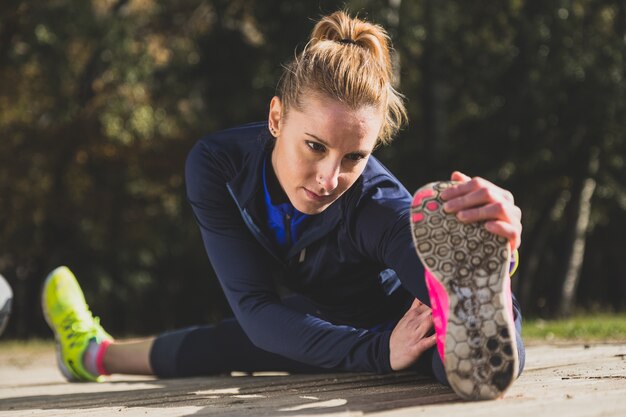Finding yourself in a phase where motivation or time for physical activity dwindles is normal. After extended periods of inactivity, getting back into an active routine can be tough. Fortunately, certain exercises can make this transition easier. This blog post will guide you through these exercises, showing you how to perform them and explaining their benefits.
1. Bodyweight Squats: The Foundation of Strength
Bodyweight squats are a flexible exercise that you can do anywhere, making them a great way to jumpstart your workout routine.
Procedure:
– Stand with your feet hip-width apart.
– Extend your arms in front of you and slowly bend your knees, pushing your hips back into a squat.
– Lower yourself until your thighs are parallel to the floor, keeping your gaze forward.
– Hold the position briefly, exhale, and return to the starting position.
Benefits:
Bodyweight squats mainly strengthen the glutes, quadriceps, and hamstrings. They also improve efficiency in daily movements like standing up from a chair or lifting objects. For an extra challenge, try adding dumbbells or small weights to your squats.
2. Plank: Core Stability and More
The low plank is a great exercise for building core and shoulder stability and reducing the risk of injuries during upper body workouts.
Procedure:
– Lie face down with your forearms on the ground and elbows aligned with your shoulders.
– Extend your legs backward, with your toes touching the ground.
– Engage your core, push through your toes and forearms, and lift your body.
– Keep a straight line from your head to your heels, maintaining a flat back.
– Hold for 30 seconds before lowering back to the starting position.
Benefits:
Planks are excellent for core and shoulder stability. If holding for 30 seconds is too hard, start with 10 or 15 seconds and gradually build up your endurance.
3. Barbell Deadlift: Strength and Flexibility Combined
The deadlift is a powerful exercise that enhances strength and flexibility in the glutes and hamstrings.
Procedure:
– Place an unloaded barbell on the floor in front of you.
– Stand with your feet hip-width apart, keeping your spine straight, chest up, and shoulders back and down.
– Load the barbell with an appropriate weight.
– Bend your knees slightly and lower your hips to grip the bar.
– Lift the bar to your hips, engaging your lats for stability.
– Push your hips back, bend your knees slightly, and lower the barbell below knee height.
– Exhale and push your hips forward to return to a standing position.
Benefits:
If a loaded barbell feels intimidating, use dumbbells or an unloaded barbell. Increase the weight when you find the current set too easy.
4. Dumbbell Row: Upper Body Strength
This exercise targets the upper body, starting with light dumbbells and gradually increasing the weight over time.
Procedure:
– Position an exercise bench at a 45-degree angle.
– Lie on your stomach on the bench, holding a dumbbell in each hand, with legs extended and heels on the ground.
– Extend your arms down along the sides of the bench.
– Exhale and pull the weights towards your chest.
– Pause briefly, squeezing your shoulder blades, then slowly lower the weights back down.
Benefits:
This exercise strengthens the upper body. If lifting both dumbbells simultaneously is tough, try lifting one at a time to increase muscle activation.
5. Lateral Forearm Plank: Core and Gluteus Strength
The lateral forearm plank not only strengthens the core but also tones the gluteus medius.
Procedure:
– Lie on your side, resting on your forearm.
– Align your elbow directly under your shoulder to avoid excess pressure on the joint.
– Extend your legs, stacking your feet on top of each other.
– Lift your hips off the ground, keeping your body in a straight line from heels to head.
– Hold the position as long as possible while maintaining proper alignment.
Benefits:
Balancing on one side makes the gluteus medius work harder, helping to maintain hip health and stability, crucial for daily activities and exercises like squats, lunges, or running.
In conclusion, these exercises offer a practical starting point to bring physical activity back into your life. Remember, consistency is key. Start slow, listen to your body, and gradually ramp up your workouts. Happy training!







